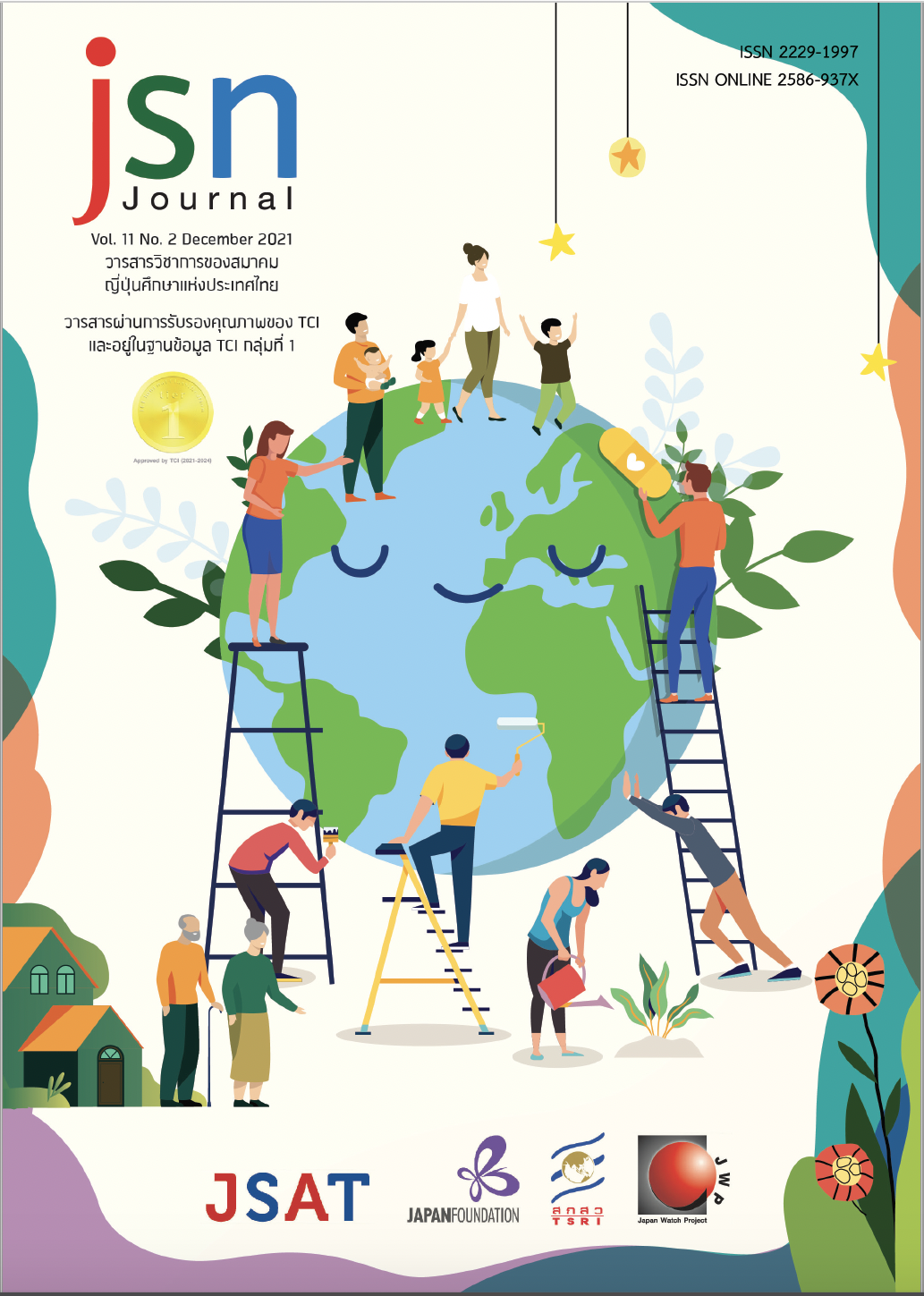ธรรมาภิบาลกับการจัดการภัยพิบัติ: กรณีศึกษาการจัดการบ้านพักชั่วคราวในจังหวัดคุมะโมะโตะ ประเทศญี่ปุ่น
Main Article Content
บทคัดย่อ
บทความนี้มุ่งศึกษาเรื่องการจัดการภัยพิบัติแผ่นดินไหวตามหลักธรรมาภิบาลในมิติด้านการตอบสนองความต้องการของประชาชนของรัฐบาลท้องถิ่นจังหวัดคุมะโมะโตะ เครื่องมือที่ใช้ในการเก็บข้อมูลวิจัย คือ การสัมภาษณ์กลุ่มย่อย และ การสัมภาษณ์เชิงลึก โดยแบ่งกลุ่มตัวอย่างออกเป็น 2 กลุ่มใหญ่คือ 1. เจ้าหน้าที่รัฐบาลของท้องถิ่นที่มีหน้าที่ดูแลช่วยเหลือผู้ประสบภัยในบ้านพักชั่วคราว และ 2. ผู้ประสบภัยที่พักอาศัยอยู่ในบ้านพักชั่วคราว จากการศึกษาพบว่า รัฐบาลท้องถิ่นสามารถจัดการภัยพิบัติแผ่นดินไหวตาม หลักธรรมาภิบาลในมิติด้านการตอบสนองความต้องการของประชาชน ทั้งด้านการจัดการที่พักชั่วคราว และการดูแลสุขภาพของผู้ประสบภัยได้เป็นอย่างดีผ่านการบริหารจัดการและความร่วมมือกับหน่วยงานต่าง ๆ ทำให้ผู้ประสบภัยสามารถพักอาศัยอยู่ในบ้านพักชั่วคราวได้อย่างมีความสุข การศึกษาในครั้งนี้ ใช้แนวคิดเรื่องหลักธรรมาภิบาลในมิติด้านการตอบสนองความต้องการของประชาชนเป็นกรอบทฤษฎีเพื่อใช้ประเมินการปฏิบัติงานให้ความช่วยเหลือผู้ประสบภัยแผ่นดินไหวในบ้านพักชั่วคราวได้อย่างเหมาะสม
Article Details

อนุญาตภายใต้เงื่อนไข Creative Commons Attribution-NonCommercial-NoDerivatives 4.0 International License.
ข้อความและข้อคิดเห็นต่างๆ ในบทความเป็นของผู้เขียนบทความนั้นๆ ไม่ใช่ความเห็นของกองบรรณาธิการหรือของวารสาร jsn Journal
เอกสารอ้างอิง
Ackerman, J. (2004). Co-governance for accountability: Beyond “exit” and “voice”. World Development, 32(3), 447-463.
Arora, D. (2000). Good governance: A study of the concept in Indian context. Retrieved from https://www.academia.edu/37631225/ Good_Governance_A_Study_of_the_Concept_in_Indian_Context
Benjamin, C. E. (2008). Legal pluralism and decentralization: Natural resource management in Mali. World Development, 36(11), 2255-2276.
Bratton, M. (2012). Citizen perceptions of local government responsiveness in Sub-Saharan Africa. World Development, 40(3), 516-527.
Carothers, T. & Brechenmacher, S. (2014). Accountability, transparency, participation, and inclusion: A
new development consensus?. Retrieved from
https://carnegieendowment.org/2014/10/20/accountability-transparency-participation-and-
inclusion-new-development-consensus-pub-56968
Goetz, A. M., & Jenkins, R. (2005). Reinventing accountability: Making democracy work for human
Japan Platform. (2016). APAN PLATFORM aid to victims of the Kumamoto earthquakes (emergency response to earthquake in Kumamoto) FY 2016 report. Retrieved from http://www.japanplatform.org /programs/pdf/JPF_kyushu-disaster2016_ report_en.pdf
Lieberman, E. S., Posner, D. N., & Tsai, L. L. (2014). Does information lead to more active citizenship? Evidence from an education intervention in rural Kenya. World Development, 60, 69-83.
Sandoval, V., & Voss, M. (2016). Disaster governance and vulnerability: The case of Chile. Politics and Governance, 4(4), 107-116.
Speer, J. (2012). Participatory governance reform: A good strategy for increasing government responsiveness and improving public services?. World development, 40(12), 2379-2398.
Standard Examiner. (2016). Construction of Kumamoto quake victim housing begins. Retrieved from http://www.standard.net/World/2016/05/17/Construction-of-Kumamoto-quake-victim-housing-
Tierney, K. (2012). Disaster governance: Social, political, and economic dimensions. Annual Review of Environment and Resources, 37, 341-363. Retrieved from https://doi.org/10.1146/annurev-environ-020911-095618
รัฐบาลท้องถิ่นจังหวัดคุมะโมะโตะ. (2560). การจัดการด้านภัยพิบัติของรัฐบาลท้องถิ่นจังหวัดคุมะโมะโตะ. ใน เอกสารประกอบการบรรยายสรุป เรื่องการจัดการด้านภัยพิบัติของรัฐบาลท้องถิ่นจังหวัดคุมะโมะโตะ วันที่ 14 ธันวาคม 2560. รัฐบาลท้องถิ่นจังหวัดคุมะโมะโตะ, คุมะโมะโตะ.
สํานักพัฒนาการประชาสัมพันธ์. (2562). ธรรมาภิบาลในภาครัฐ. สืบค้นจาก http://hq.prd.go.th/prtechnicaldm/ewt_news.php?nid=1727&filename=index


